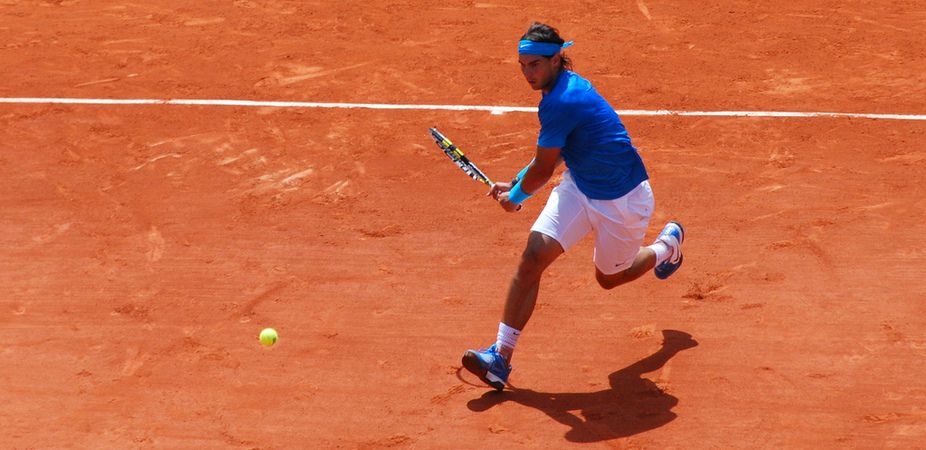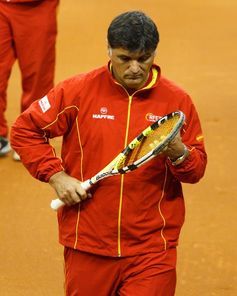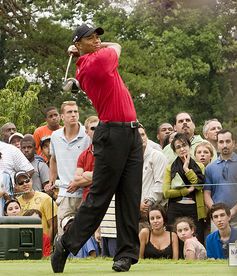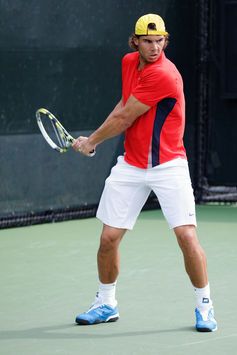
Different Strokes: How Rafael and Tiger Hit The Top of Their Games (Op-Ed)

This article was originally published at The Conversation. The publication contributed the article to LiveScience's Expert Voices: Op-Ed & Insights.
As Rafael Nadal moves into the Australian Open semi-finals after beating Grigor Dimitrov yesterday afternoon, it’s a good opportunity to think about how he reached his champion status and compare him with another champ, Tiger Woods.
Both are world number one in their respective sports, of course, and it is common knowledge that they’ve both spent endless hours mastering their skills.
But what the two also share is the particular way that they practised their skills during childhood – and this could be an overlooked secret of their success.
Shots in the dark

Two weeks ago I was fortunate enough to listen to Rafael Nadal’s coach, Toni Nadal, talk at the Tennis Australia Coaches' Conference. He spoke of Rafa’s junior days, detailing stories of how he practised.
Interestingly, Toni emphasised how he never wanted Rafa to focus on the outcome of his shots as he simply wanted Rafa to develop the innate feel of striking the ball with fast racquet speed.
In other words, he removed outcome feedback from practice.
Sign up for the Live Science daily newsletter now
Get the world’s most fascinating discoveries delivered straight to your inbox.
Similarly – in a story that has become sporting folklore – Tiger Woods used to practice hitting golf balls in the dark, restricting any visual feedback on the outcome of each shot.
This practice technique may have facilitated Tiger’s unbelievable feel for striking the ball so consistently well.
Not bad for a two-year-old.
What’s the evidence?
Since then, research by Professor Rich Masters and the late Dr Jon Maxwell has shown how the removal of outcome feedback during practice encourages implicit motor learning, which is to say that the skill is acquired with little to no conscious awareness of the skill’s mechanics.

Learning in such a manner appears to fast-track an athletes’ route to expertise with stable performance when under pressure or in a fatigued state.
Put simply, when feedback about the outcome of performance is removed, the athlete is unable to consciously assess their movement patterns in relation to the skill outcome. Consequently, the skill of striking the ball is acquired implicitly.
Of course this method of practice does have potential downfalls, as, ultimately, outcomes are very important in competitive sport.
It is also possible the removal of outcome feedback could lead to the performer directing their attention internally, which in effect, could lead to the opposite of implicit learning (explicit learning) – but it seems likely that this did not occur with Tiger and Rafa.
Explicit learning involves the acquisition of a skill via conscious processes. Motor skills are typically acquired in this manner (particularly in adults) either due to the athlete consciously exploring their movements or because a coach has provided verbal instructions regarding the athlete’s technique.
While this style of learning does generate improvements, it often leads to a breakdown in performance under pressure.
Error minimisation techniques

Toni Nadal also spoke of another training method employed with Rafa: when Rafa practised his weaker strokes, Toni ensured that he never hit too many balls continuously.
This may at first seem counter-intuitive, as repetition is the main ingredient for acquiring any motor skill. But Toni argued that more repetitions were accompanied by more errors, leading Rafa to become more conscious of his movements and experience lowered confidence levels as a result.
The findings from Professor Masters, Dr Maxwell and their colleagues seem to validate this technique. Skills are learnt implicitly when errors are minimised during practice.
When fewer errors are made, the likelihood of an athlete becoming conscious about their movements is reduced. Thus, by practising the weaker shots in shorter bouts with fewer repetitions, it was less likely that Rafa would become conscious of his mistakes.
It appears that Toni Nadal was very clever with his practice methods, which ultimately assisted the implicit acquisition of tennis skills for Rafa.
It would be interesting to know whether Tiger also adopted “error-reduced” practice during his childhood, but it would not surprise me if he did, even if it was done incidentally.
These subtle practice techniques that encourage implicit learning are now being applied to other domains such as the teaching of surgery skills. Fingers crossed that the surgeons learning via these techniques develop the expertise equivalent to that of Rafa and Tiger, or preferably even better than any sports star!
In addition to his role as a PhD Candidate at Victoria University, Tim Buszard works for Tennis Australia.
This article was originally published at The Conversation. Read the original article. The views expressed are those of the author and do not necessarily reflect the views of the publisher. This version of the article was originally published on LiveScience.












